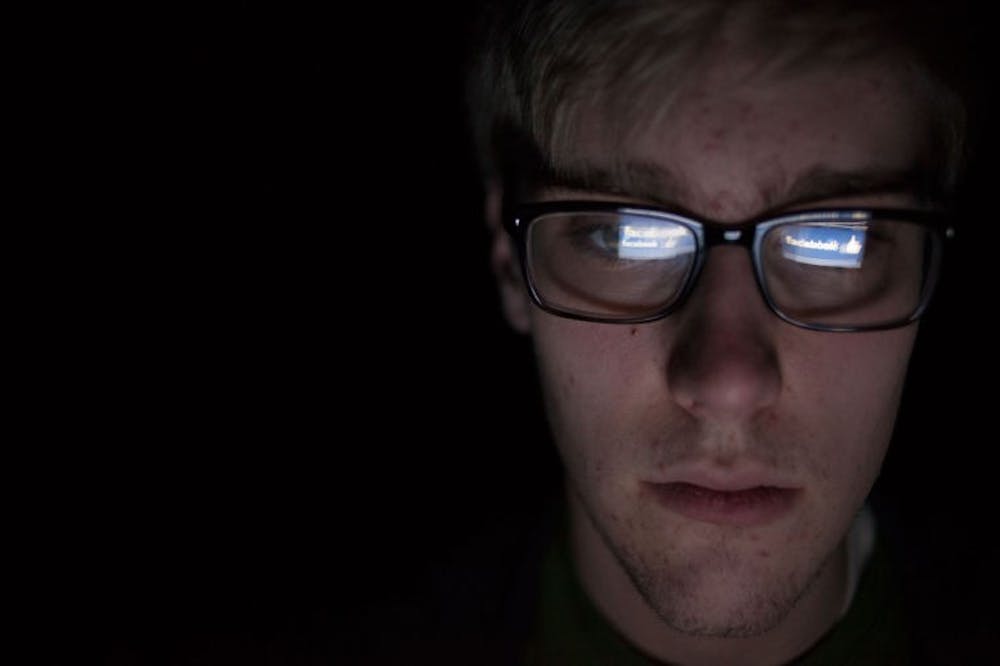Editor’s Note: The identities of the administrators of the Twitter account OU Confessions mentioned in this story have remained anonymous in keeping with the account’s online anonymity.
For most students, sending a tweet, posting a comment or tagging a friend on Instagram is easier than saying something face to face. People are connected to their technology every moment of every day — which can, in turn, have a negative consequence: cyberbullying.
There are three elements of bullying: Harm needs to take place, and the person victimized needs to feel harmed in some way; the person bullying must be at a greater power than the victim; and there has to be repetition, said Christine Bhat, associate professor and program coordinator for the department of counseling and higher education. When a person posts something online, the bullying is repeated because the audience is reading that post again and again and no one stops it.
“I think one of the biggest components has to do with the bystander. I think we’re reaching a stage where people need to be more empowered to say ‘that’s not OK,’” said Bhat, whose recent research has focused on cyberbullying.
Bhat said she believes starting education on cyberbullying at a young age is a key point in preventing it from happening.
Bhat isn’t alone in believing cyberbullying prevention starts with education; in fact, the Ohio General Assembly has taken steps to bring prevention education into the classroom.
HB 116, known as the Jessica Logan Law, signed into law in January 2012, requires school districts to establish anti-cyberbullying policies. It also requires districts to inform teachers and parents about their bullying policies.
The bill was named after Jessica Logan, a Cincinnati teenager who committed suicide in 2008 after nude photos of her circulated through her high school from an ex-boyfriend. The late teen’s family received a $154,000 payout from Sycamore High School because the school allegedly knew of the bullying but only told one of the students to delete the photo and stop contacting Logan.
A vital piece of pending legislation for Ohio is SB 126, which requires the board of education in each school district to adopt anti-cyberbullying policies and provide training for employees and volunteers. These policies must also address actions that occur away from school but significantly disrupt the in-school environment.
“The Internet provides a venue for diverse viewpoints, just like real life, and would attract some voices that would be disrespectful and unethical,” Parul Jain, an assistant journalism professor, said in an email. “People sometimes forget that social media platforms, however private they may appear to be, are public forums after all where their every activity is monitored, being recorded, archived and available for scrutiny at a later date.”
Jain, who teaches a course titled Strategic Social Media, devotes multiple class sections to discussing ethical issues in using social media.
“As a user, we need to engage in media literacy and rise above such opinions without giving such individuals the publicity that they may desire, but don’t deserve,” Jain said.
In the past year, OU has seen a rise in anonymous Twitter accounts where tweets are private submissions from students. @OU_Confessions, which has more than 15,700 followers at press time, receives more than 100 submissions a day. While all aren’t posted, the account holder is selective about what is chosen.
“It’s just not fair when you can’t defend yourself,” said the user behind @OU_Confessions, who avoids posting names that could easily identify a student. “I try not to put people on the spot.”
The account holder for @OU_Confessions also removes tweets if someone requests that it should be taken down. Many followers also often respond to tweets posted.
“Some people are pretty cruel and open about what they say, but I try not to block people,” said @OU_Confessions account holder. “I don’t want to block people. Everyone has a right to see the Twitter.”
Bhat and Jain both believe that a key component to cyberbullying is the intent.
“The OU accounts are all set up in a harmless manner, for fun, and a few bad elements are giving the expressions that users on these accounts engage in bullying behavior,” Jain said.
Bhat urges social media users to think about what they are posting.
“We’re reaching a stage now where people really need to think about the ethical ramifications for the things that they do, and I don’t know that people stop to think about these things,” Bhat said.
@kruseco
sk139011@ohiou.edu
This article orginally appeared in print under the headline "Digital Demons"






